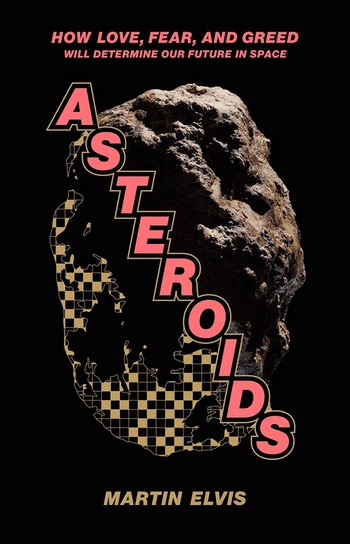Review: Asteroidsby Jeff Foust
|
| The large number of asteroids doesn’t necessarily translate into extraordinary wealth, he notes, since it depends on how many of those asteroids are accessible and have resources that can be extracted (an analysis summarized in an equation, modeled on the Drake Equation for SETI, that one magazine dubbed the “Elvis Equation.”) |
Elvis offers three core reasons for studying asteroids: love, fear, and greed. “Love” is shorthand for the love of knowledge: studying asteroids for pure science and using them to understand the origins of the solar system and perhaps even life on Earth. “Fear” and “greed” are more obvious: fear of asteroid impacts and greed in the form of wealth those asteroids may offer.
There’s little dispute about the scientific value of studying asteroids, and events like the Chelyabinsk impact in 2013 have raised awareness of the threat those asteroids pose, helping better fund NASA’s modest planetary defense program. However, there is still a question of whether and how the business cases for asteroid mining can close, as the failures of Deep Space Industries and Planetary Resources demonstrate.
Elvis, who has been participating in conferences and doing his own research on asteroid resources, offers a balanced assessment of the prospects and pitfalls of asteroid mining in several chapters of the book. The large number of asteroids doesn’t necessarily translate into extraordinary wealth, he notes, since it depends on how many of those asteroids are accessible and have resources that can be extracted (an analysis summarized in an equation, modeled on the Drake Equation for SETI, that one magazine dubbed the “Elvis Equation.”) But, just like that Drake Equation, many of the values of the Elvis Equation are uncertain given the challenges in both identifying accessible asteroids rich in useful resources as well as extracting those resources in a cost-effective manner.
In the book’s final chapters, Elvis talks about the promise of commercial space in general, with new markets that could one day be customers for water or metals obtained from asteroids. The problem, though, is demonstrating the role such resources will play. While it’s hard to imagine a long-term future with a thriving human presence beyond Earth that doesn’t make use of asteroid resources, there’s no clear “killer app” that will drive its adoption in the near term. Refueling satellites, for example, might one day make use of water obtained from asteroids, but isn’t needed for satellite servicing for the foreseeable future—especially since most satellites today use propellants like hydrazine that can’t be mined from asteroids. (A related question is whether demand for space resources in general might be depressed if ultra-low-cost launch systems, like SpaceX’s Starship, make it cheaper and easier to simply launch resources like water from Earth.)
Asteroids doesn’t have any answers to those questions, but Elvis does a good job clearly illustrating both the benefits and challenges of asteroid mining. Even if the greed aspect of asteroids doesn’t pan out in the foreseeable future, the love and fear aspects of asteroids more than justify their continued study. Space advocates and entrepreneurs are unlikely to be deterred by those challenges, and the failures of past ventures, in their continued effort to tap into what they believe the vast wealth of the solar system.
Note: we are using a new commenting system, which may require you to create a new account.
